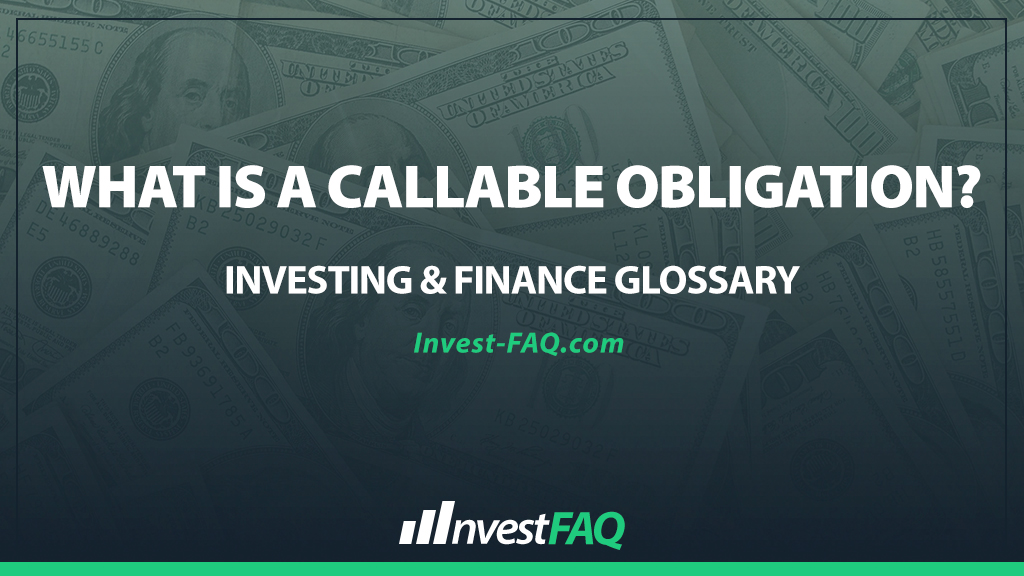
Callable Obligation
Contents
A callable obligation is a financial instrument or debt security that gives the issuer the right, but not the obligation, to repay the principal before the scheduled maturity date. This feature is typically embedded in bonds or loans, providing issuers with flexibility to manage their debt portfolio according to changes in interest rates or improvements in their credit status.
In the realm of business finance, callable obligations are employed by companies and governments as a strategic tool for debt management.
By issuing callable debt, entities can hedge against future interest rate declines by having the option to refinance the debt at lower rates.
While this can offer significant interest cost savings to the issuer, it introduces uncertainty for investors, who may face the early return of principal and the challenge of reinvesting at potentially lower interest rates.
Example of a Callable Obligation
Let’s consider “EcoBuild Corp.,” a construction company that issues a $1 million callable bond with a 10-year term and a 5% annual interest rate. The bond includes a callable feature that allows EcoBuild to redeem the bond at par value after 5 years.
Issuance of Callable Bond: Upon issuance, EcoBuild records an increase in cash and a corresponding increase in long-term liabilities (bonds payable) of $1 million.
Annual Interest Payments: EcoBuild recognizes an annual interest expense of $50,000, paying this amount to the bondholders.
Early Redemption: If, after 5 years, market interest rates have dropped to 3%, EcoBuild decides to exercise its call option. It redeems the callable bond at par ($1 million), removing the liability from its balance sheet.
By exercising the call option, EcoBuild can take advantage of the lower interest rates by issuing new debt at 3%, significantly reducing its interest expenses for the remaining term.
The accounting treatment for this transaction involves debiting the bonds payable account to remove the liability and crediting cash to reflect the outflow for redemption.
This strategic decision helps EcoBuild improve its financial position but requires careful consideration of the call premium costs and the potential impact on the company’s relationship with investors.
Significance for Investing & Finance
Callable obligations hold significant implications in both accounting practice and financial strategy:
Financial Flexibility: They provide issuers with the flexibility to adapt their debt obligations as market conditions change, enhancing opportunities for cost savings.
Interest Expense Management: Callable obligations allow issuers to potentially lower their interest expenses by refinancing debt at lower rates.
Investor Relations: The callable feature affects the attractiveness of a debt instrument to investors, influencing the initial pricing and yield requirements.
Accounting and Reporting: Proper accounting for the issuance, interest payments, and potential early redemption of callable obligations is crucial for accurate financial reporting and compliance with accounting standards.
In summary, a callable obligation is a pivotal financial instrument for entities seeking to maintain optimal control over their debt structures. It offers strategic advantages in managing interest costs and capital structure, albeit with considerations for investor expectations and the careful accounting of these transactions to ensure transparency and compliance.
FAQ
What factors might lead an issuer to exercise the call option on a callable obligation?
An issuer may exercise the call option on a callable obligation to take advantage of lower interest rates for refinancing or to adjust its capital structure, aiming to reduce interest expenses and optimize financial performance.
How does the inclusion of a callable feature affect the market value of a debt instrument?
The inclusion of a callable feature generally lowers the market value of a debt instrument compared to a non-callable equivalent, as investors require a higher yield to compensate for the risk of early redemption.
Are there any restrictions on when an issuer can call a bond?
Yes, many callable obligations include a call protection period, during which the issuer cannot exercise the call option, providing investors with a guaranteed interest income for a defined period.
What is the impact of callable obligations on an investor’s portfolio strategy?
Callable obligations introduce reinvestment risk into an investor’s portfolio strategy, as the early return of principal may force investors to reinvest at lower interest rates, affecting long-term income projections.
